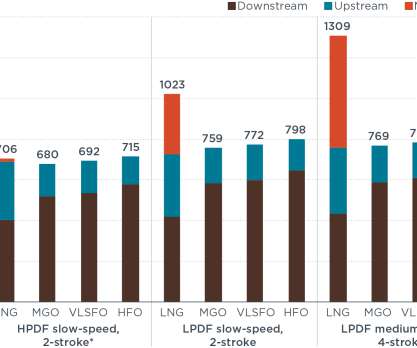ICCT life-cycle analysis finds no climate benefit in using LNG as marine fuel
Green Car Congress
JANUARY 29, 2020
Additionally, LNG engines are tuned to either emit low nitrogen oxide (NO x ) emissions—at the cost of higher methane emissions in some cases—or to incorporate NO x reduction technologies such as exhaust gas recirculation (EGR) or selective catalytic reduction (SCR). —Pavlenko et al.










Let's personalize your content